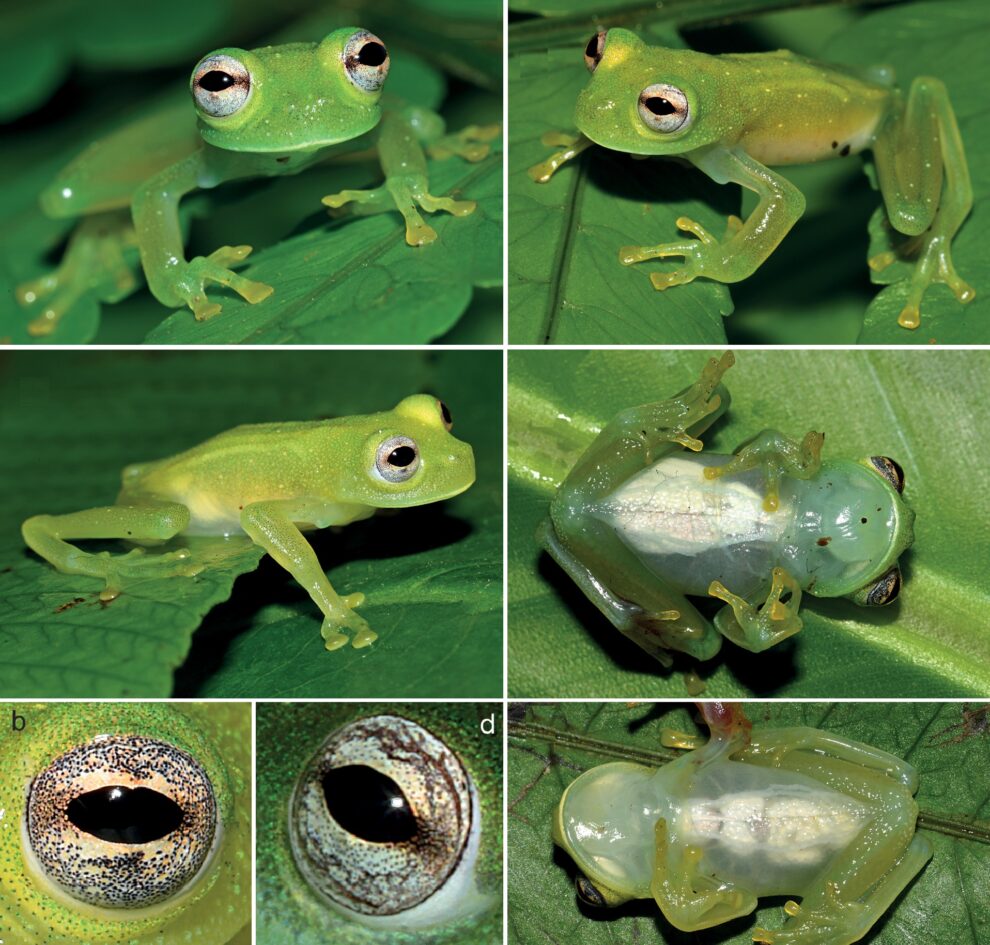Researchers discovered a new and “peculiar” amphibian species while traipsing through a swampy forest in Peru.
The newfound creature is a type of glass frog, meaning part of its body is transparent, making visible some of its internal organs, according to a study published on May 16 in the journal Evolutionary Systematics.
Researchers came across two specimens of the species while traveling near a riverbank in the foothills of the Andes Mountains in 2019.
Guided by torchlights and headlamps, they spotted the creatures — both males — perched on leaves and making high-pitched chirping noises in the rain.
The frogs were captured, euthanized and taken to a lab for further study. After closer observation and molecular analysis, it was determined that the frogs were members of a previously undocumented species.
It was named Chimerella mira after the Latin word for “surprising” because upon first observation, researchers confused the frogs with another species.
Only the third known species in its genus, named Chimerella, the yellow-green frog is distinguished by its “striking” eye color and unique mating call.
Chimerella mira’s silvery-white iris sets it apart from the other related frogs, researchers affiliated with institutions in Peru and Germany said. “
Although these differences may appear negligibly small, iris colouration has proven to be a very reliable diagnostic character in many groups of frogs to distinguish among species,” researchers said.
Additionally, the newfound frog produces a mating call consisting of multi-pulsed notes known as “Trii” calls, while its closest relative makes single-pulsed “Tic” calls, researchers said. Though subtle, the difference is also indicative of species separation.
Much else about Chimerella mira, including its population size, range and reproductive habits, remains unknown.
“Our findings demonstrate the need for future research to evaluate the taxonomic status of numerous populations of glassfrogs, particularly in Peru, where they remain markedly understudied,” researchers concluded.
There are 163 known species of glass frogs, allocated to a dozen genuses.
The frogs can turn their transparency on and off, and typically use it as a form of camouflage when they are vulnerable, according to a study published in the journal Science in 2022.
To become partially see-through, they conceal most of their blood cells by packing them into their liver, the study found.
Source : The Olympian











